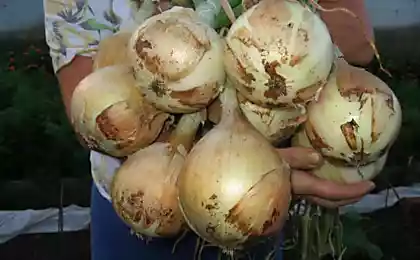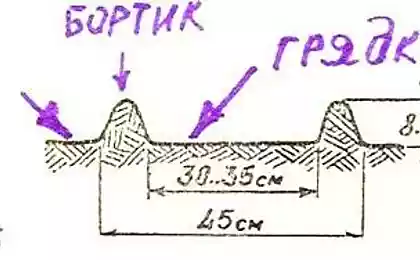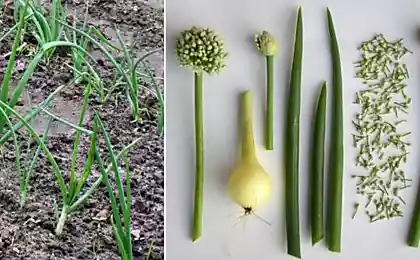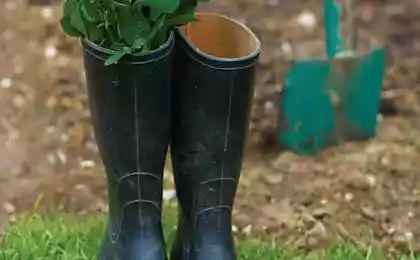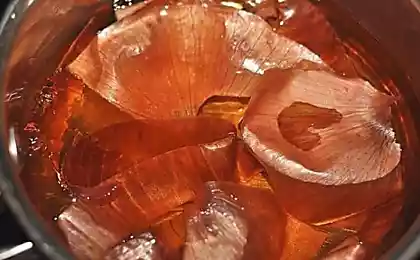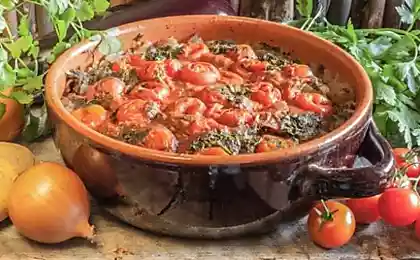594
How to grow leeks

Leek is a biennial culture is easy to grow as a perennial – it is enough to determine under its cultivation fertile land and to renew the planting by seeds, which it forms for a second season. About what leek farming leads to better yields, I'll tell you in this article.
At the Amateur acres edible species Allium porrum family Amaryllidaceae cultivated for the sake of "tablenote" growing out of it half a meter lanceolate leaves. In fact, about grassy onion leek gardeners and onions called for its characteristic appearance.
With productive or commercial purposes of cultivation, it is impractical to plant leeks in a land with acidic, sandy or clay. The plant is a crop only on the fertile flood plain or soils with a loose structure. To improve the structure of depleted soil in advance before planting to make a digging dolomite powder, garden compost, ash, and ammonium nitrate. Dose components are determined by the landowner individually, based on the structure of your soil and previously as fertilizers.
Given the long growing season of leek, in the southern regions it is grown for seed sowing, in the more Northern areas – seedlings. The most powerful onions form the late-ripening varieties with a development period of not less than 140 days.
Stable quality and early harvest is different from other leeks European breeding: Columbus, Matejko, Pancho and Goliath. Of the later varieties of a good: Porvica, Bandit, Lancelot, Marbella and Calahan (F1). All breeding is allowed to grow in our territories and included in the state register of the Russian Federation.
Leeks are very sun-loving culture and when there is insufficient light is prone to strelkovanie, so landing should be planned with maximum sun exposure. Despite the resistance of adult plants to the cold weather, young shoots may die when frozen in -7'C and to avoid planting it is advisable to mulch with straw or cutting peat.
AGROTEKHNIKA leek seedling method In the Central region sowing seedlings of leeks late varieties it is advisable to start from the end of February, followed by transferring the grown seedlings in the open ridge no later than may 10. When placing the seedlings on the plot, usually dig a shallow line grooves, leaving a gap of a quarter of a meter between them, which are abundantly shed a urea solution (urea). At the bottom of the grooves, approximately 15 cm to make an extra recess, planted them with seedlings and sprinkle the ground. Often place it is not recommended to prevent darkening of density and rapid depletion of soil in a common fit.
Proper agricultural onion leeks require hilling the growing instances. It is an important agricultural practices that contribute to the thickening and powerful "bleaching" stablinski. In the case of overwintering, the whole leeks also need to Spud and top to cover the garden with leaves or hay. It is better to spring to write on the ridge late-maturing varieties are more resistant to frost. Before that, in October, need plants to feed an aqueous solution of superphosphate. With the onset of spring organic cover must be removed to ratkoceri the base of the stems and make for supply of complex NPK composition in mixture with humic fertilizer.
If you do not intend collecting seed material, with the formation of flowering the shooter the entire plantation should dig for fresh consumption, otherwise the leeks will quickly lose its food quality by going to a natural stage of reproduction, physiologically regaining inedible decorative features of the Amaryllidaceae family.
Herbaceous vegetable culture could be used in a menu, barely formed some of the first leaves. Closer to the summer the leaves stiffen, and all the value remains white about the stem that fit into the diet until the next season. Dig the harvest should be in late autumn. Leaves and roots after removal of the leek ridge pruned by the shears and dropped the base of the stem in moist sand, which and save the plants by placing them in a cool dark basement.
Source: ayatskov1.ru





